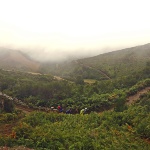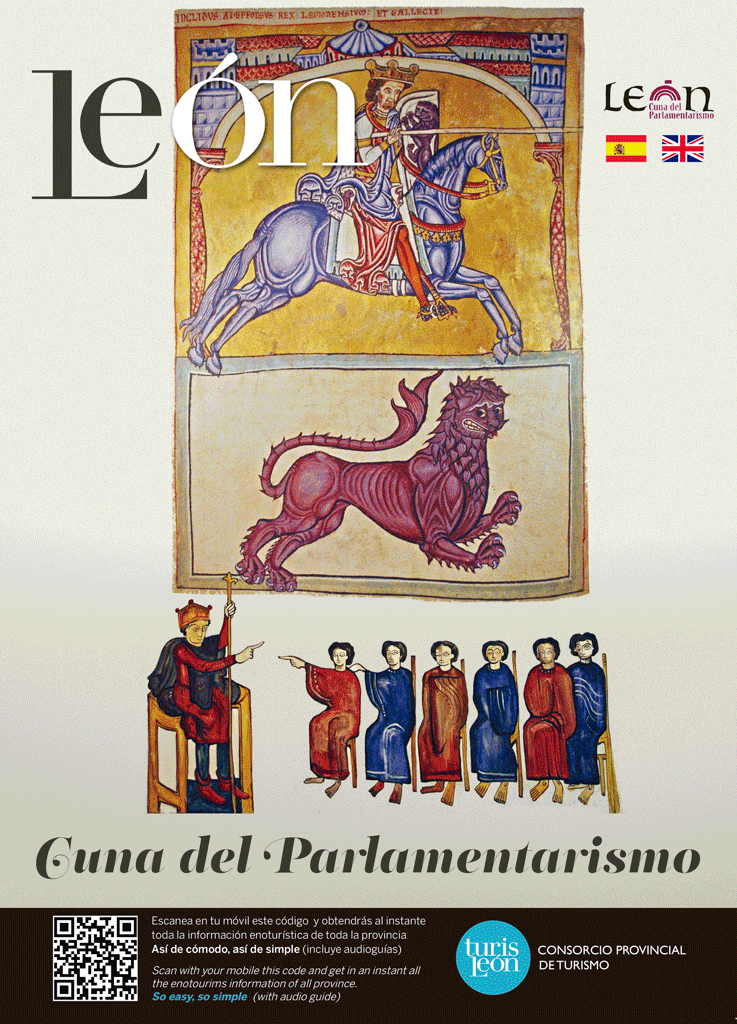CAMINO DE SANTIAGO (SAINT JAMES WAY)
El Camino de Santiago is an millennial path. It is a trail of culture, legends, art and history, forcing us to walk with vigour and patience. Pilgrims who visit Santiago come to the province of León for their interest in tourism, literature, art, history or religion. For centuries until today, people from all over the world or different ages go along the Camino de Santiago (Saint James´ Way) through Leonese lands.
The most famous way, which goes through the province of León, is the French way. It penetrates through the horizontal shape of the Campos de Sahagun (Sahagún Fields) and ends in La Laguna, a town in the region of El Bierzo. There are 235 Km of route which go across a wide variety of landscapes, villages and traditional cultures.
For those travellers looking for art, Sahagún is a must, not only because it is a required stop on the Way, but for its characteristic red brick Mudejar- style, combining perfectly the Christian and Muslim cultures.
From Sahagun, the trail forks, crossing Bercianos del Real Camino or Calzadilla de los Hermanillos, until both paths join again in Mansilla de las Mulas, a walled town, settled by the Esla River, the longest river in the Province. Afterwards, it comes León, a city which is well worth a visit, to see the monuments reminiscent of its historic past.
Leaving León, the Way to Astorga crosses places which extend in both sides of the route, such as La Virgen del Camino and its modern shrine dedicated to La Virgen del Camino (“The Virgin of the Way”). Then, travellers will go past Villadangos, whose church has the allusion to Clavijo´s Battle, where Muslims were defeated. Later, travellers get to Hospital de Orbigo. Its name comes from the Orbigo River, which flows through the town. Here, the travellers have to enjoy the historic facts of Paso Honroso.
There is a short way to get to Astorga, a dream place for pilgrims. The town was historically linked to the Way, and a clear example is the number of hospitals for pilgrims. There were twenty four hospitals. The Episcopal Palace, The Cathedral and the old Council must be visited.
We then reach Ponferrada, which emerged from the iron bridge which the Bishop Osmundo ordered to cross the River Sil in the 11th century. Then, it is Cacabelos, from a Roman origin and Jacobean passion. Then, the monumental town of Villafranca del Bierzo, the end of the Way for those who cannot get to Santiago and who could get their “jubileo” in front of the door to forgiveness in the Romanesque Church dedicated to the Saint.
The Way leaves the province of León with its last part in Pereje, Trabadelo, Portela and Veg, a beautiful landscape which leads us to the beloved Galicia of Santiago.
Did you know?
Tradition or Legend
The tradition says that we must drop a stone with our backs to the Cross of Ferro to be lucky during the way. This custom, tradition or legend may become a reality when people consider that the Cruz de Ferro is one of the four hundred woods that the council of El Acebo maintained in its lands to guide the walkers because of the heavy snowfalls.
Mudejar Syle
San Tirso, San Lorenzo and The shrine of La Peregrina are essential examples of Mudejar style typical from Sahagún.

